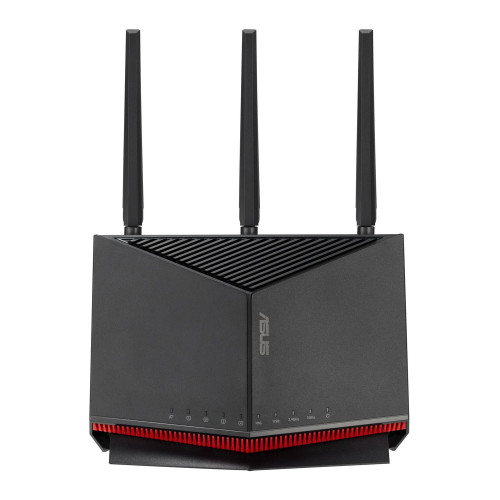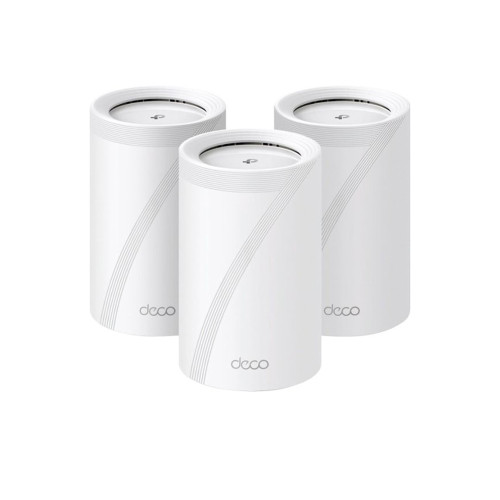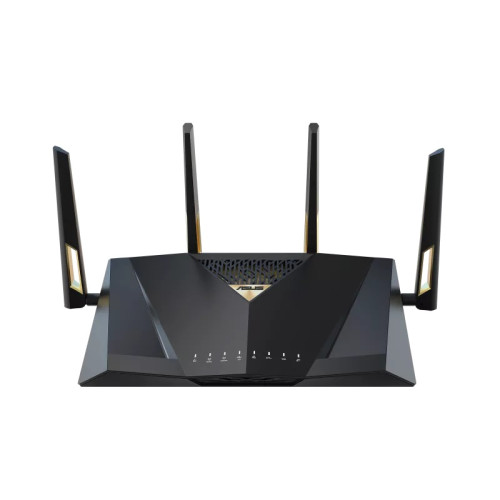POSTED: 18 March, 2025
Top Wi-Fi 7 Routers and Devices to Supercharge Your Connectivity
The top Wi-Fi 7 routers offer blazing-fast speeds while significantly enhancing your home network. What makes a good Wi-Fi 7 router? Most would define a Wi-Fi 7 router as one that supports the 2.4 GHz, 5 GHz, and 6 GHz frequency bands and offers channel widths of up to 320 MHz. Additionally, Wi-Fi 7 features Multi-Link Operation (MLO), enabling a client device to merge multiple bands into a single connection with the router. Traditional Wi-Fi networks cannot keep up as more devices connect to home and office networks— for streaming, gaming, video calls, or smart home automation. Wi-Fi 7 is built to handle these increasing demands, offering you a seamless, high-performance experience across multiple devices simultaneously.
Wi-Fi 7 greatly improves bandwidth, stability, and overall efficiency compared to previous generations. It introduces wider channel bandwidth, better interference management, and enhanced data transmission. From ultra-fast downloads to uninterrupted 4K or 8K streaming, lag-free online gaming to prolonged online media creation, Wi-Fi 7 has you covered.
Upgrading to a Wi-Fi 7 router is one of the best ways to future-proof your connectivity. These routers can handle more devices, reduce network congestion, and provide a more stable and reliable connection, even in environments with heavy internet usage.
In this blog post, let's take a closer look at the best Wi-Fi 7 routers and devices currently on the market. As with standard Wi-Fi routers and best Home Wi-Fi systems, every Wi-Fi 7 router we review is backed by rigorous real-world testing and network benchmarking. This enables us to determine which models offer the best range and coverage and which excel at transmitting signals through walls. Whether you're looking for a high-performance router for gaming, a powerful option for a large home, or a device that ensures smooth remote work, we'll help you find the right upgrade right here.
ASUS RT BE6800 Wi-Fi 7: Dual-band Performance at Tri-band Price
Key Features:
- BE6800 Dual Band Wi-Fi for Speeds up to 6800 Mbps
- Lag-free Dual Band (2.4 GHz + 5 GHz) MLO
- Expanded and Consistent Coverage with detachable antennas
- Wi-Fi 7 (802.11be) For Seamless Streaming, Gaming and Data-intensive tasks
- 1x 10G WAN/LAN | 4x 2.5G LAN Ports
- Black Colour
- 3 Years Warranty
The initial wave of Wi-Fi 7 routers entered the market at a premium price compared to their Wi-Fi 6 and Wi-Fi 6E predecessors. To bridge this price gap, brands have introduced more affordable models that exclude the 6 GHz band.
ASUS previously launched the RT-BE88U, a dual-band Wi-Fi 7 router. Now, the company has introduced the RT-BE86U, which is slightly lower priced and tailored toward gamers. However, with a retail price of around £300, the RT-BE86U must deliver strong performance to rank among the top Wi-Fi routers.
In terms of design, the RT-BE86U features a modern design that sits upright, rather than the more traditional design of the previous-generation Wi-Fi routers. It has three adjustable antennas extending from the top. Positioned from left to right, the LED indicators display the internet connection status, the four 2.5 GbE LAN ports, the 10 GbE WAN port, the USB, the 2.4 GHz band, the 5 GHz band, and power.
Regarding performance, the RT-BE86U excels on the 5 GHz band, delivering noticeable gains over the Archer BE3600, particularly at a 25-foot range. However, the Archer BE3600 takes the lead in short-range performance on the 2.4 GHz band.
Beyond raw performance, ASUS RT BE6800 Wi-Fi 7 has a robust suite of software features that add to its appeal. It includes Dual WAN connectivity, smartphone fallback, essential gaming optimisations, advanced parental controls, and in-depth network monitoring—all at no additional cost. Even Mac users are catered to with built-in Time Machine support.
Use Case: If you're looking for a Wi-Fi 7 router with strong 5 GHz performance for online gaming, 4K streaming, and data-intensive tasks, the RT BE6800 is an excellent choice. Its Multi-Link Operation (MLO) ensures seamless connectivity, while advanced software provides added control and security.
TP-LINK Whole Home BE9300: Tri-Band Wi-Fi for Ultimate Coverage
Key Features:
- Tri-Band Wi-Fi Speeds up to 9214 Mbps
- Multi-Link Operation (MLO)
- Enhanced Coverage with Internal Antennas
- Wi-Fi 7 (802.11be)
- 4× 2.5 Gbps WAN/LAN Ports
- White Colour
When it comes to home networks, brands like TP-Link routers have started launching newly minted Wi-Fi routers that leverage a new wave of bandwidth-guzzling speeds that claim to be at least 4x faster than Wi-Fi 6E. TP-Link's latest offering is their Archer BE series of routers, with the BE9300 being the most affordable variant of the series.
The TP-Link BE9300 Archer is essentially similar to its larger counterparts but lacks a customisable LED array, which displays emoticon-like visuals indicating the weather, time, and other non-essential details on other models. Additionally, it features an OLED screen entirely. As for connectivity, the router boasts four 2.5Gbps LAN ports, a single 2.5Gbps WAN port for modem connectivity, and a USB 3.0 port for NAS or network-attached drives, allowing for seamless home network storage setup.
TP-LINK Whole Home BE9300 tri-band router operates across the 6GHz, 5GHz, and 2GHz bands, ensuring compatibility with various devices. It supports older legacy models and the latest Wi-Fi 7-ready devices, making it a highly adaptable choice for any home network.
What's more? Setting up the TP-Link Be9300 Archer is a breeze through the TP-Link Tether app. The app showcases all devices currently connected to your network, and each connected user is separated by their connected band. Thus, you can easily identify which devices are utilising what band on your network.
Use Case: If you need a high-speed router that supports multiple devices across a wide area, the TP-LINK BE9300 is worth it. Its tri-band operation ensures compatibility with legacy and new Wi-Fi 7 devices, and the easy-to-use TP-Link Tether app simplifies network management.
ASUS RT-BE88U Dual-band Wi-Fi 7: High Performance & Extensive Connectivity
Key Features:
- Wireless Router
- Parental Control
- AiMesh Node
- Memory: 256 MB Flash and 2 GB RAM
- Black Colour
- 3 Years Warranty
The next on our list is the ASUS RT-BE88U, a dual-band router that uses Wi-Fi 7 technology and an exceptional complement of high-speed wired ports to deliver fast internet. However, its lack of a 6GHz radio band and 320MHz channel support may discourage early adopters.
The RT-BE88U features a classic, low-profile design with dual-band functionality. It is equipped with four adjustable antennae—two extending from the rear sides and two positioned at the back—that frame the 2.5 GbE and 1 GbE ports.
Regarding connectivity, the router offers an extensive range of ports, including a 10 Gbps WAN/LAN, a 10 Gbps SFP+, a 2.5 Gbps WAN/LAN, three 2.5 Gbps LAN, and four 1 Gbps LAN ports. Under the hood, a USB 3.0 port is present on the back of the router, allowing you to store data externally or enabling a 4G/5G smartphone tethering feature.
The RT-BE88U supports AsusWRT 5.0 firmware, now standard across ASUS Wi-Fi 7 routers. While it lacks one of the key features of the Wi-Fi 7 standard—the 6 GHz band—it still includes other advancements like Multi-Link Operation (MLO) and 4K-QAM.
If you don't have any 6GHz client devices and aren't looking to add one anytime soon, the RT-BE88U provides the best value for money.
Use Case: Best for users who prioritise wired connections for gaming or professional work. The RT-BE88U offers extensive high-speed ports or smartphone tethering.
Buying Guide: How to Choose the Best Wi-Fi Routers 2025?
When purchasing a wireless router, start by assessing the size of your coverage area, the number of devices to be connected, and the types of gadgets in use. High-end models aren't made for everyone, and it's not worth paying extra for features you're unlikely to make use of.
Here is how to choose the best Wi-Fi router to meet your current and future wireless networking needs.
How Much Internet Speed You Need?
Start by checking the speed of your internet service provider (ISP) offering. A standard router is good for browsing, emails, and light streaming if you're on a basic plan with speeds around 50-100 Mbps. If you regularly stream in HD, attend video calls, or do casual gaming, a mid-range plan of 200-500 Mbps is a sweet spot. Lastly, if you are a power user and require ultra-fast speeds for 4K or 8K streaming, competitive gaming, or managing a smart home with multiple devices, you'll want a router that can handle 1 Gbps or more at a time.
Which Wi-Fi Generation Should You Get?
Wireless networks use 802.11 protocols to send and receive data. New protocols are released every few years, and each one brings a new generation of routers and client devices. At the moment, 802.11ax has become mainstream, offering faster speeds, better efficiency, and improved battery life for connected devices. If you want even more speed and lower latency, consider Wi-Fi 6E, which expands into the 6 GHz band for less interference. Wi-Fi 7 is emerging in 2025, promising even faster speeds and better multi-device support.
What Type of Router Should You Look For?
Like other tech gadgets, not all routers are created the same. A standard single-band router, operating on the 2.4 GHz frequency, is enough for basic browsing but will struggle with heavy usage. Dual-band routers add a 5 GHz channel, making them worth consideration for streaming and gaming. If you have a large household with many devices, a tri-band router with an extra 5 GHz or 6 GHz band is the best home Wi-Fi standard.
Mesh Wi-Fi systems are great for working in extensive workspaces or large homes. Instead of relying on a single router, a mesh system uses multiple nodes around your space to eliminate dead zones and provide seamless coverage.
Which Other Features Should You Get on Your Wi-Fi Router?
When buying a Wi-Fi router, speed and bandwidth are equally important. Entry-level models like AX1800 provide around 1.8 Gbps, which is enough for small households. If you need something more solid, mid-range options like AX3600 to AX5400 handle multiple devices. For the fastest speeds, high-end routers offer 10 Gbps or more, making them ideal for serious gamers and smart home enthusiasts.
Beyond speed, features like MU-MIMO and OFDMA help your router handle multiple devices. Beamforming is another excellent feature that directs Wi-Fi signals toward your devices rather than spreading them randomly. Security is another important factor. A good router should offer WPA3 encryption for better protection, built-in firewalls and antivirus features. If managing network usage is important, choose a router with parental controls, Quality of Service (QoS) settings, and guest network capabilities. Parental controls help restrict internet access for specific users and set browsing schedules, which are handy for parents who want to keep their children's gaming and social media activities in check.
Don't Overlook Ports and Connectivity
Strong Wi-Fi speeds are great, but wired connections still play a role in getting the fastest connectivity. Look for a router with at least four Gigabit Ethernet (10/100/1,000 Mbps) ports to connect wired devices such as desktop PCs, network-attached storage (NAS) drives, and home automation hubs. Consider a router that supports link aggregation for even faster throughput for large file transfers. This feature combines two gigabit Ethernet LAN ports to increase throughput up to 2 Gbps.
USB ports are another useful addition, allowing you to share a printer or USB drive across your network. Having two USB ports means you can do both simultaneously. Additionally, opting for a router with removable antennas can be beneficial. Some manufacturers offer high-gain replacement antennas to enhance performance, and third-party options are also available. Ensure your router supports any antennas you purchase to avoid compatibility issues.
Ready to Buy the Best Wi-Fi Router for You?
This blog post enlists our top recommendations, providing detailed insights to help you decide, including the ideal use cases for each model. You'll also find a wide collection of Wi-Fi routers featuring multiple brands and models at Box.co.uk, ensuring you get the perfect match for your needs. Don't settle for weak internet signals—browse our selection today and enjoy seamless, high-speed connectivity!


